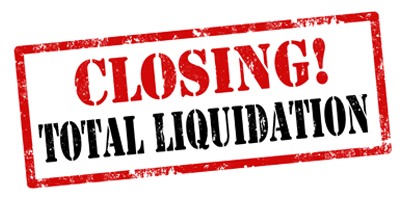The 6-Second Trick For Company Liquidation
The 6-Second Trick For Company Liquidation
Blog Article
Some Known Details About Company Liquidation
Table of Contents9 Easy Facts About Company Liquidation ShownAbout Company LiquidationCompany Liquidation Fundamentals ExplainedThe Company Liquidation PDFsCompany Liquidation Things To Know Before You Get This
A liquidator is specifically selected to manage the ending up of a business's affairs in order for it to be folded normally when the firm is going insolvent. The liquidator is an impartial 3rd party who supervises the sale of firm assets in order to pay off any outstanding financial debts.Their duty consists of, however is not restricted to: Neutral Movie director: A liquidator is charged with functioning as a neutral 3rd celebration to oversee the whole business liquidation process. Create Declaration of Matters: Liquidators should create a thorough declaration of affairs record. This record is distributed to creditors, describing the present financial condition of business at the time of its liquidation.
After the liquidation of a business, its presence is eliminated from Companies Home and it stops to be a legal entity. If supervisors navigated the procedure without problem, there would certainly be no charges or personal liability for solid debts anticipated. Now, with a fresh start, directors can discover new organization chances, though specialist examination is advisable.
Not known Facts About Company Liquidation
If even more than 90% of all firm investors concur, liquidation can take area on brief notice within 7 days, the minimal legal notification for lenders. Generally, the larger the liquidation and the more properties and funding the business has, the longer the process will certainly take.

We understand that no two companies are the same, which is why we will take the time to obtain to recognize your service so we can advise the ideal training course of activity for you. We only function in your benefits, so you can be entirely certain in the service we offer.
4 Simple Techniques For Company Liquidation
In the UK, there is an established process to closing down or reorganizing a limited firm, whether it is solvent or financially troubled. This procedure is called liquidation and can only be taken care of by an accredited insolvency this article expert (IP) in accordance with the Bankruptcy Act 1986. There are four major sorts of business liquidation process: Lenders' Volunteer Liquidation (CVL); Mandatory liquidation; Management; and Members' Volunteer Liquidation (MVL).

In these scenarios, it is important that the firm ceases trading; if business remains to trade, the supervisors might be held directly responsible and it can result in the bankruptcy specialist reporting wrongful trading, recognized as misfeasance, which may bring about lawsuit. The directors appoint a bankruptcy specialist about his and as soon as this has been agreed and validated, there is a meeting with the shareholders.
Obviously, if there are no investors, this action of the procedure is not necessary (Company Liquidation). The IP takes control of the business and starts the business liquidation procedure. The supervisors are no more associated with what happens, consisting of the sale of the company's possessions. Nevertheless, if the supervisors desire any one of the possessions, they can alert the IP.
The Greatest Guide To Company Liquidation
The main distinction is that the business's lenders related to the court for an ending up order which requires the insolvent firm right into a liquidation process. Most of the times, creditors take this action as a last resource since they haven't obtained repayment via other forms of arrangement. The court appoints a bankruptcy practitioner, likewise called an official receiver, to carry out the mandatory firm liquidation process.
This sort of company liquidation is not volunteer and directors' conduct is reported to the UK's Secretary of State once the liquidation process has actually been completed. As a result, any supervisor that stops working to accept the IP or has actually been associated with supervisor misconduct, or an illegal act, may lead to significant consequences (Company Liquidation).
It is utilized as a means to protect the business from any kind of lawsuit by its lenders. The supervisors of the company consent to make routine settlements to settle their financial obligations over a duration of time. The appointed administrator manages the volunteer management process, and receives the payments which they after that disperse to financial institutions according to the concurred amounts.
Getting The Company Liquidation To Work
This gives the firm with time to establish a plan going forward to save the business and prevent liquidation. Nevertheless, now, directors hand control of the firm over to the selected administrator. If a firm is solvent however the directors and investors wish to close business, a Participants Voluntary Liquidation is the right option.
The firm liquidation process is taken care of by a liquidator selected by the directors and investors of the business and they should authorize a statement that there are no creditors continuing to be. The liquidation procedure for an MVL is similar to that of a CVL because assets are become aware however the proceeds try this out are dispersed to the supervisors and the investors of the company after the liquidator's costs have been paid.
Report this page